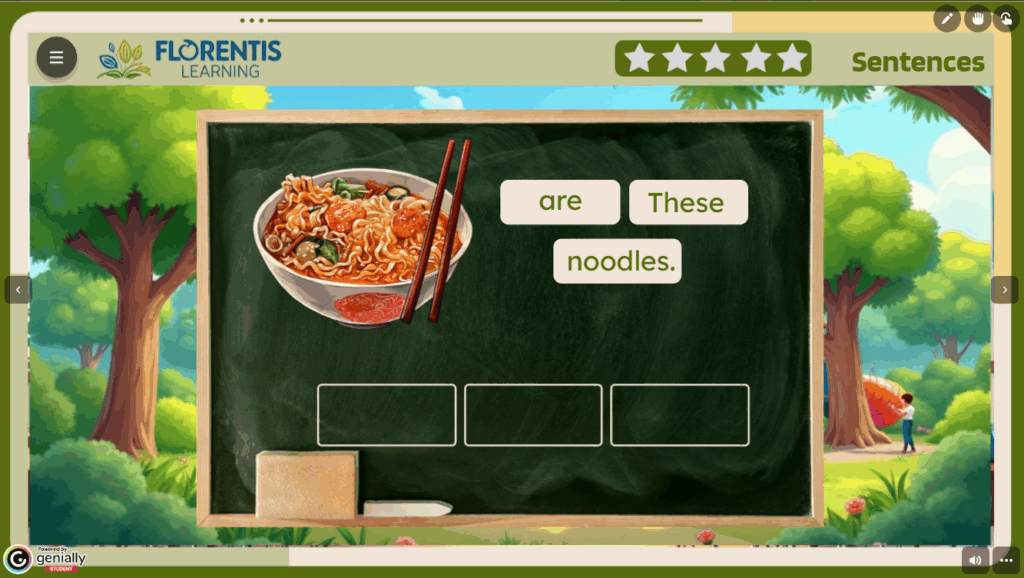Teaching English to Chinese ESL students is both deeply rewarding and full of surprises. If you’ve ever wondered how to teach Chinese ESL students effectively, you’re not alone. Over eight years of working with Chinese learners—first with VIPKID and then teaching independently—I’ve discovered strategies that truly help students thrive.
In this post, I want to share the real lessons I’ve learned (often the hard way!), plus practical tips you can start using right away. Whether you’re new to online ESL teaching or looking to better serve your Chinese students, I hope these insights help you teach with confidence.
My Journey Teaching Chinese Students
I got my start teaching English online with VIPKID eight years ago. Despite years of classroom teaching, I still remember the nerves before my first class, wondering if I could really teach effectively over a webcam! But I quickly fell in love with the job.
I taught hundreds of lessons through VIPKID’s structured curriculum, which gave me a solid foundation in pacing, reward systems, and how to keep kids engaged.
About four years ago, I shifted to working independently. I now teach private one-on-one lessons and small groups for Chinese families and boutique online schools. Going independent gave me the freedom to customize lessons—and the responsibility to really know my students and meet their unique needs.
Why Focus on Chinese ESL Learners?

Chinese students make up one of the largest groups in the online ESL world. They’re often dedicated, polite, and highly motivated. But they also face predictable challenges in English—especially with pronunciation, sentence structure, and speaking confidence.
And there’s the cultural layer, too. Understanding how education works in China helps us adapt our approach to make our lessons not just effective, but truly supportive and encouraging.
Recognize Common Language Challenges
Pronunciation
Many of my students struggle with sounds not found in Mandarin:
- Dropping final consonants (e.g., “book” → “boo”)
- Confusing “L” and “R”
- The dreaded “th” sound
✅ What works: I love short, playful pronunciation drills. For one younger student, I used to hold up silly flashcards with “th” faces and make him repeat after me like a monster—he giggled every time but finally got it!
Grammar and Word Order
Chinese grammar is different from English in fundamental ways:
- No articles (“a,” “the”)
- No plural markers the same way
- Different word order
✅ What works: Sentence frames are magic. I often use on-screen drag-and-drop activities to show students how English sentences are built. Students can drag the words into place if you are using a co-browser such as Koala Go or you can use the annotation tools in your platform to have the students draw lines to put the words in order.

Be Culturally Sensitive and Build Trust
If you want to teach Chinese ESL students effectively, you need strategies that work with their cultural background. Many Chinese learners come from very teacher-directed classrooms. They may:
- Avoid guessing out of fear of being “wrong”
- Wait for very clear instructions
- Be shy, especially in the beginning
✅ What works:
One of my students, a 10-year-old named Angela, wouldn’t answer open-ended questions at first. She’d go completely silent if I asked “Why?”
I learned to scaffold her answers. Instead of “Why do you like cats?” I’d say:
“Do you like cats because they are cute? Or because they are funny?”
Within weeks, she was choosing options, then adding her own reasons.
✅ Strategies:
- Praise effort over correctness
- Explain it’s OK to guess
- Use consistent routines to build confidence
Adapt Your Teaching Style for Online Lessons
Many Chinese parents are looking for structured, goal-oriented classes. They want to see results.
✅ What works:
- Share lesson objectives at the start
- Include interactive slides, games, and drawing
- Give short, clear homework or practice suggestions
Parents love knowing exactly what their child learned. I often send a short message after class summarizing new words or skills.
At Florentis Learning, every lesson includes ready-to-use feedback you can share with parents. Summarize learning goals, vocabulary, and progress in seconds. Watch the quick video demo to see how it works!
Prioritize Speaking Practice
A huge pain point: Many Chinese students excel at reading and grammar but are shy or hesitant about speaking.
✅ What works:
- Role-plays (ordering at a restaurant, shopping)
- Visual prompts for storytelling
- Repeated sentence frames
- I like ___ because ___.
- I want to go to ___ because ___.
- My favorite ___ is ___ because ___.
One older student of mine, Eric, was fantastic at written English but so quiet in class. We started with simple, safe frames:
Teacher: What do you see?
Eric: I see a tiger.
Over time, we added details:
“I see a big, orange tiger in the grass.”
That structured approach transformed his confidence.
Celebrate Progress
Chinese students often respond well to clear goals and rewards.
✅ Ideas:
- Digital stickers or badges
- Visible “lesson tracker” charts
- Certificates after milestones
For my private students, I often customize rewards to their interests—Pokémon badges, soccer trophies—anything that makes them light up!
Florentis Learning lessons take into account the needs of all students for motivation and rewards. Completion certificates are available at the end of each unit. Built in reward ‘stars’ are available to reward students throughout the lesson. Some activities also include ‘trophies’ that appear when students answer questions correctly.
Use Targeted Resources
Not all ESL materials are created equal. For Chinese learners, the best resources are:
- Age-appropriate and culturally accessible
- Clear, attractive visuals
- Aligned to CEFR levels and exams
- Interactive and engaging, particularly if you are teaching ESL online to beginners
✅ At Florentis Learning, our curriculum was designed with these needs in mind. We offer:
- Pre-A1 to B1 CEFR-aligned units
- Interactive slides for co-browsers, Zoom/online classes
- Phonics, speaking, reading, writing all built in
👉 Explore the Complete Classroom Curriculum
Final Thoughts on How to Teach Chinese ESL Students
Teaching Chinese ESL students isn’t just about vocabulary and grammar. It’s about understanding their world, helping them feel safe to speak up, and celebrating their growth.
Over eight years, I’ve taught hundreds of students—and every single one taught me something in return.
If you’re patient, culturally aware, and willing to adapt, you’ll find this work incredibly rewarding.
Recommended Reading
Ready to Make Teaching Easier?
Florentis Learning offers a complete, easy-to-use curriculum designed for online teachers. Save time planning, boost engagement, and get students talking from day one.
Frequently Asked Questions
Why do Chinese students struggle with articles and plurals?
Chinese doesn’t use articles (“a,” “the”) or mark plurals the same way English does. Teachers should provide explicit practice with sentence frames.
How do I get shy students to talk?
Build trust with positive reinforcement, use predictable routines, and give them safe sentence frames to practice.
What curriculum works best?
Look for structured, interactive lessons with clear goals and speaking practice. Florentis Learning’s curriculum is designed with these needs in mind.
How do I learn to teach Chinese ESL students effectively?
To teach Chinese ESL students well, you need to understand their cultural background, common language challenges, and best practices for building trust and confidence.


Leave a Reply